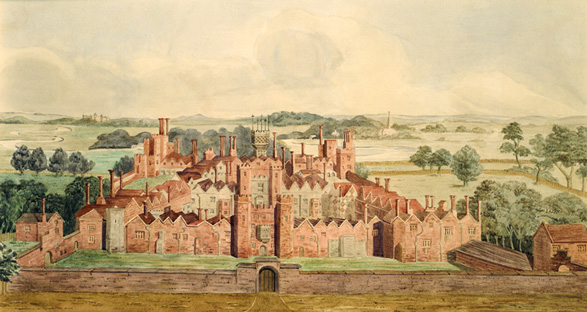|
Jack Bilbo
Jack Bilbo (born Hugo Cyril Kulp Baruch, 13 April 1907 –19 December 1967) was a German writer, art gallery owner, and self-taught painter. Life Bilbo was born in Berlin, Germany in 1907. His parents owned a theatrical supply company. After the Nazis came to power he fled to France, Spain, and finally to England. In 1941, Bilbo opened ''The Modern Art Gallery'' in London, exhibiting the work of Kurt Schwitters, Pablo Picasso, and his own paintings and drawings, as well as the work of many unknown artists. Bilbo moved to Weybridge, England after the war ended and created large figurative sculptures in cement in his home's garden. They were entitled, ''Life'', ''Devotion'', and ''Sanctuary'', and were destroyed when he left England in the early 1950s, moving to France with his wife Owo. In 1948, he published ''Jack Bilbo: an Autobiography''. The book is subtitled "The first forty years of the complete and intimate life-story of an Artist, Author, Sculptor, Art Dealer, Philo ... [...More Info...] [...Related Items...] OR: [Wikipedia] [Google] [Baidu] |
Nazi Party
The Nazi Party, officially the National Socialist German Workers' Party (german: Nationalsozialistische Deutsche Arbeiterpartei or NSDAP), was a far-right politics, far-right political party in Germany active between 1920 and 1945 that created and supported the ideology of Nazism. Its precursor, the German Workers' Party (; DAP), existed from 1919 to 1920. The Nazi Party emerged from the Extremism, extremist German nationalism, German nationalist, racism, racist and populism, populist paramilitary culture, which fought against the communism, communist uprisings in post–World War I Germany. The party was created to draw workers away from communism and into nationalism. Initially, Nazi political strategy focused on anti–big business, anti-bourgeoisie, bourgeois, and anti-capitalism, anti-capitalist rhetoric. This was later downplayed to gain the support of business leaders, and in the 1930s, the party's main focus shifted to Antisemitism, antisemitic and Criticism of ... [...More Info...] [...Related Items...] OR: [Wikipedia] [Google] [Baidu] |
Kurt Schwitters
Kurt Hermann Eduard Karl Julius Schwitters (20 June 1887 – 8 January 1948) was a German artist who was born in Hanover, Germany. Schwitters worked in several genres and media, including dadaism, constructivism, surrealism, poetry, sound, painting, sculpture, graphic design, typography, and what came to be known as installation art. He is most famous for his collages, called '' Merz Pictures''. Early influences and the beginnings of Merz, 1887–1922 Hanover Kurt Schwitters was born on 20 June 1887 in Hanover, at Rumannstraße No.2, now: No. 8, the only child of Eduard Schwitters and his wife Henriette (née Beckemeyer). His father was (co-)proprietor of a ladies' clothes shop. The business was sold in 1898, and the family used the money to buy some properties in Hanover, which they rented out, allowing the family to live off the income for the rest of Schwitters's life in Germany. In 1893, the family moved to Waldstraße (later renamed to Waldhausenstraße), future site of ... [...More Info...] [...Related Items...] OR: [Wikipedia] [Google] [Baidu] |
Pablo Picasso
Pablo Ruiz Picasso (25 October 1881 – 8 April 1973) was a Spanish painter, sculptor, printmaker, ceramicist and Scenic design, theatre designer who spent most of his adult life in France. One of the most influential artists of the 20th century, he is known for co-founding the Cubist movement, the invention of Assemblage (art), constructed sculpture, the co-invention of collage, and for the wide variety of styles that he helped develop and explore. Among his most famous works are the Proto-Cubism, proto-Cubist ''Les Demoiselles d'Avignon'' (1907), and the anti-war painting ''Guernica (Picasso), Guernica'' (1937), Guernica (Picasso)#Composition, a dramatic portrayal of the bombing of Guernica by German and Italian air forces during the Spanish Civil War. Picasso demonstrated extraordinary artistic talent in his early years, painting in a naturalistic manner through his childhood and adolescence. During the first decade of the 20th century, his style changed as he experimente ... [...More Info...] [...Related Items...] OR: [Wikipedia] [Google] [Baidu] |
Weybridge, England
Weybridge () is a town in the Borough of Elmbridge in Surrey, England, around southwest of central London. The settlement is recorded as ''Waigebrugge'' and ''Weibrugge'' in the 7th century and the name derives from a crossing point of the River Wey, which flows into the River Thames to the north of the town centre. The earliest evidence of human activity is from the Bronze Age. During the Anglo-Saxon and medieval periods, Weybridge was held by Chertsey Abbey. In the 1530s, Henry VIII constructed Oatlands Palace to the north of the town centre, which he intended to be the residence of his fourth wife, Anne of Cleves. He married Catherine Howard there in July 1540 and the palace remained a royal residence until the Civil War. The buildings were demolished in the early 1650s and a new mansion, Oatlands House, was constructed to the east of Weybridge later the same century. Prince Frederick, Duke of York and Albany owned the mansion in the 18th century. The town began to expan ... [...More Info...] [...Related Items...] OR: [Wikipedia] [Google] [Baidu] |


